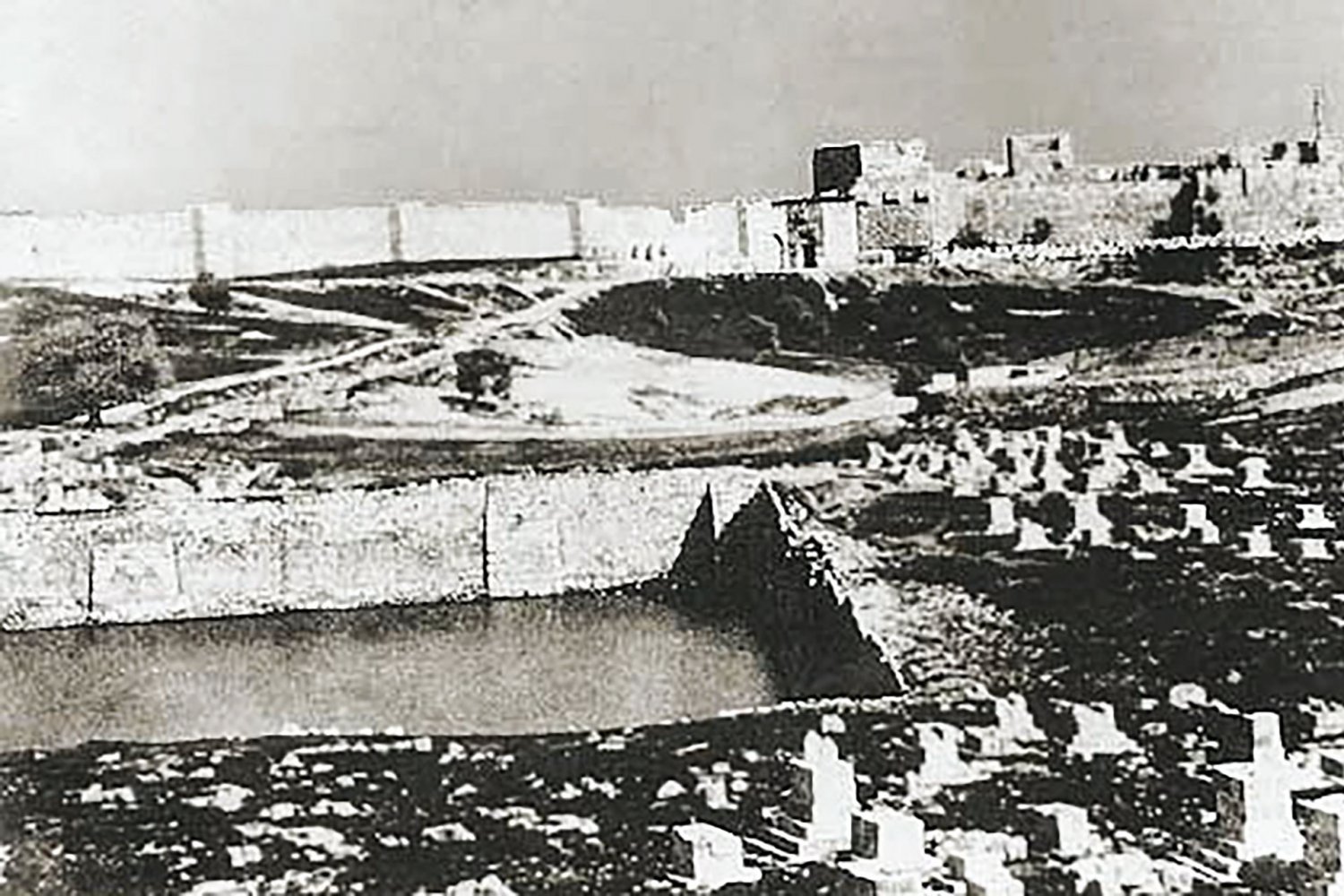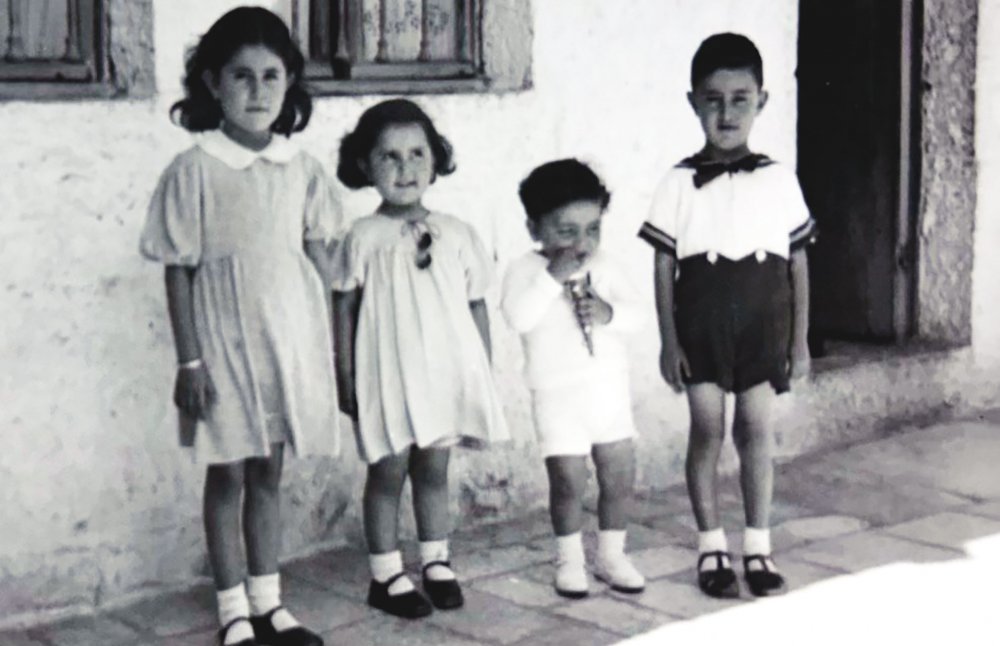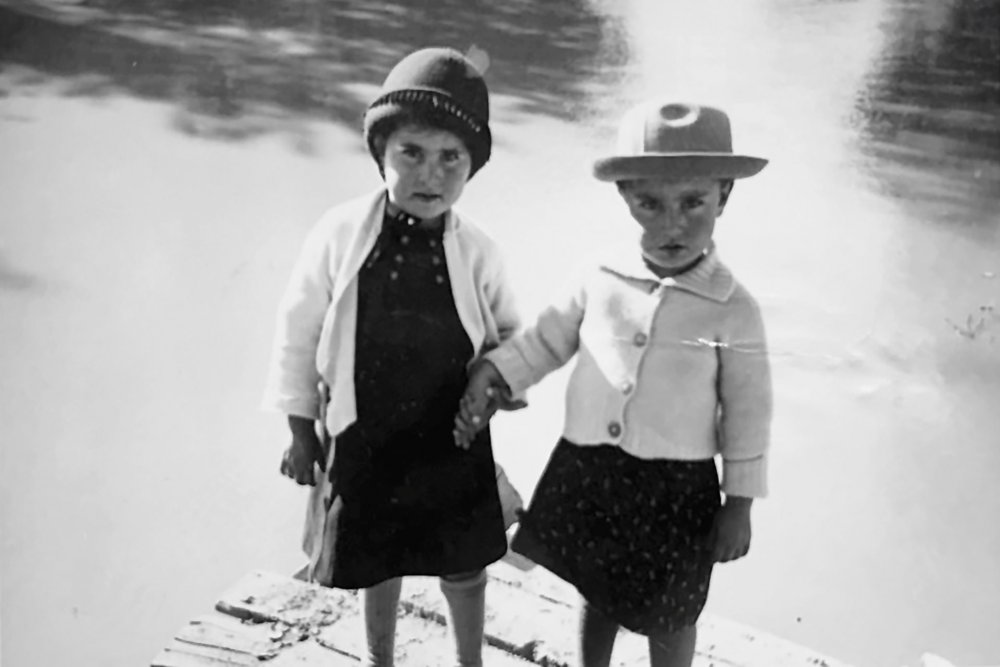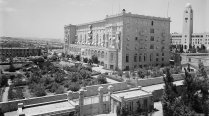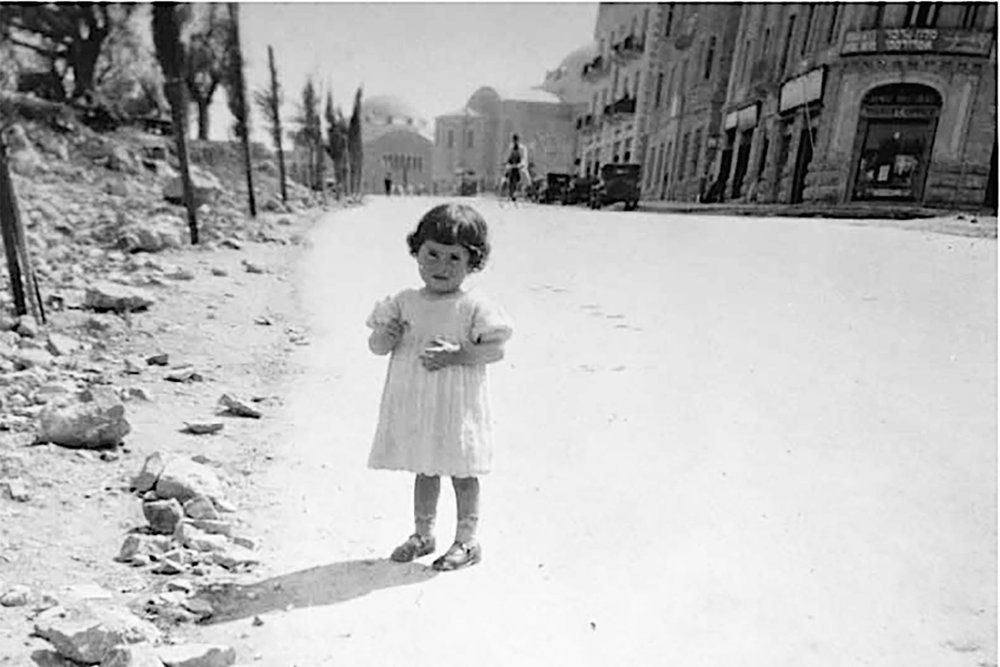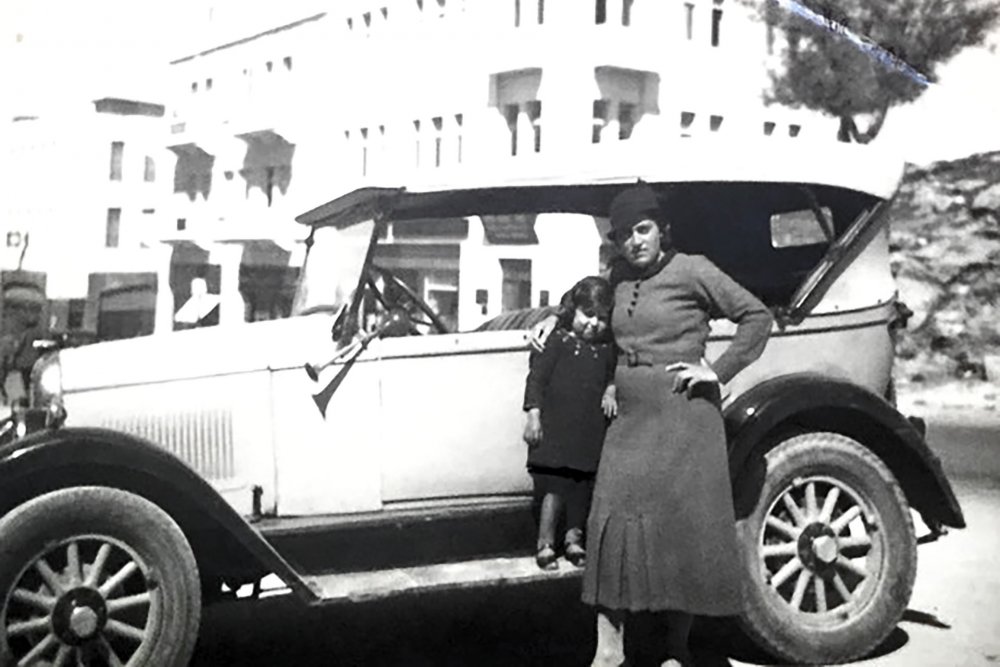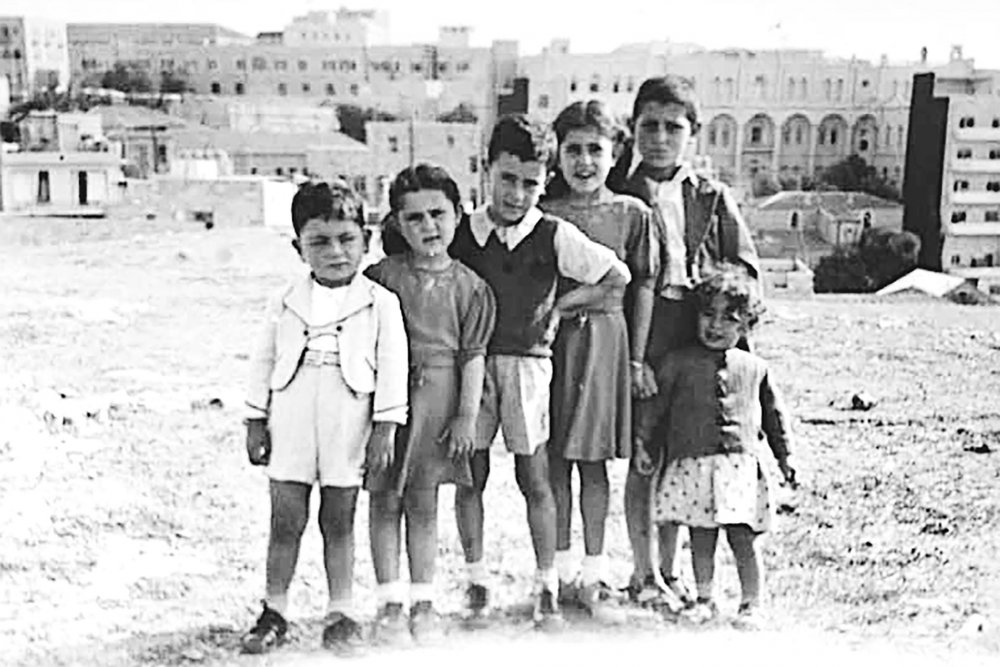Making our way back to the King David Hotel, we called my cousin’s father. Uncle S. must have been eleven years old in 1948, surely he must be able to guide us. You’re wasting your time, he scoffed. But we needed to affirm the past’s existence. The only way to regain our footing, we knew, was to see and walk Mamilla through the mind of our family historian: Auntie M.
We remained intent on our demand: 001 1 416 . . . . We dialed Auntie M.’s number.
My cousin held the phone; I held a video camera. I was going to revive our house in my camera lens. I left to my cousin the role of linking us across time and space through the telephone.
Seven time zones, three languages, and about five or so decades unhinged themselves:
- You mean behind King David Street?
- King David Street?
- Tu m’as bien dis que c’est King David Street?
- Ouais, c’est écrit là: Ha-Melekh David. Dis-lui que c’est le grand boulevard, au ouest de la vieille ville.
- Well, uh, that’s what it’s called. The big boulevard leading up to the Old City. The same street the hotel and the YMCA are on.
There was nothing odd in the telephone obliterating our spatial and temporal discontinuities. These technologies had played a constitutive part in our life-world as Palestinians. It was through the intimacy, intensity, and immediacy provided by the telephone that we had constructed our affiliations as family members to begin with. I knew Auntie M.’s voice before I ever heard her in the flesh. It was through images—still, and later also moving—that we recognized ourselves as displaced people. The architectlike handwriting that I encountered on postcards and birthday cards sent by Auntie M.’s daughter was one I emulated my entire childhood, long before meeting cousin L. I saw myself as if in a mirror in all of my cousins’ pictures mailed back and forth across continents. Telephones, telegrams, photographs, videos, letters, postcards: they allowed us to be with one another, to re-imagine an elsewhere, to transgress to another time.
- No, Auntie. There is no such building on that street . . .
- Well turn around to the other side. It should be right there, to your right.
- Mais t’es sûre qu’elle veut dire à la droite? Il ’y a pas de rue là.
- Uh, there is no street right there. On the right. No, no street.
- You walked down from the cemetery? So it should be to your right, next to the baths.
- Les bains. Mais oui, on a décidé que c’était là les bains. C’était bien des bains, non?
- Yes, yes, we did. We walked down from the cemetery. I think these are the baths, but . . .
- Pass the triangular building. And then on the left. It’s right there!
- Ça doit être là, à gauche . . . J’ sais pas.
- Écoute, on a déjà passé à gauche. Il y avait un cul-de-sac. Derrière le bâtiment rose, à côté des poubelles. Peut-être elle veut dire à droite?
- Mais non, la droite c’est l’autre côté du quartier. Ça doit être de ce côté-là . . . Il faut peut-être retourner vers le bâtiment rose . . .
- Pink building … pink building? . . .
Time expanded. Our multidirected conversation was piecemeal, at best. Nonlinear, nonchronological; irreconcilable, really.
- Et si tu lui parlais, toi? En arabe. Ça pourrait aider, non? Elle doit se rappeler des endroits en arabe, pas en anglais.
- Boh, tu crois vraiment que ça fait une différence?
- Beh . . .
- Bon, allez, passe le téléphone.
Time shrunk. Auntie M. was utterly confident of where we were: Summer 1945 standing with her neighbors in the courtyard two streets down watching her brothers play hide and seek. A little farther behind were the markets. And over there the jabal, and there, the cemetery, the Mamilla “pool,” the conservatory, the monastery.
- Kunna nitfarajj ‘ala la‘ib violin min il-shubbak . . . ou marra, lamma kan abooki honak ma‘ sahbo S., yil‘aboo kurat qadam ‘al-hayt el-ma‘had, ana ou mamma kunna raji‘een min . . .
- Alors?
- Hmm. Des histoires.
From time to time, the Auntie M. we were familiar with surfaced:
- Et?
- Shhh. Elle raconte.
- C’est pas le moment de raconter des histoires!
We were transposed to Auntie M.’s living room following her mind in the past tense, listening to her in the present tense, wandering. The three of us it seemed were in a slipzone, gripped between the old and the new, between the here and the there, between the before and the after.
There were long moments of inert silence, perhaps loneliness, as she dug through her memory and we dug ruts into the same little streets, back and forth. All that space was inhibiting both her and us.
- Ah, ah! Mazbout! Hadda beit Jamila!
- C’est la maison de Jamila!
- Jamila!? C’est qui Jamila?
- Une voisine? Je sais pas, mais ça fait rien. On doit y être. On est proche. Tu vois des escaliers? - Okay, beit Jamila . . . stanni shwaiy, rayheen ‘al-shmal . . . But what staircase are you talking about?
- Tu filmes les escaliers là, d’accord?
- Mais c’est pas les bons!
- Écoute, tu sais jamais. Tu crois vraiment qu’elle s’en rappelle! C’est des escaliers. C’est à côté de la maison de Jamila. Il y en a pas d’autres!
- D’accord, d’accord je filme . . . Mais c’est pas eux.

